Noggin drama!

This spring we traveled to Oregon’s spectacular North Coast for a few days of theater and school visits, to explore the cellular actors that populate our brains.

We are indebted to TRIO Clatsop and the tireless work of Meredith Payton, who once again helped organize housing and meals for all our volunteers!

THANK YOU FORT GEORGE BREWERY
THANK YOU PETER PAN MARKET
THANK YOU ASTORIA COOP
THANK YOU THE Y ASTORIA
We LOVE Clatsop County, and have brought our extra noggins, art projects and volunteers on many occasions to hear from curious K-12 and college students in the thriving communities of Astoria, Warrenton, Seaside and Knappa.

LEARN MORE: Pre-K, Fish and Logger Lobes!
LEARN MORE: Signal from Noise on the Oregon Coast
LEARN MORE: Viking, Shark, Fishermen & Bandit Brains!
LEARN MORE: Clatsop Community Cortex
LEARN MORE: North Coast Noggins: Art, Alevins & Brains!
LEARN MORE: Accumbens in Astoria
This year we collaborated with the skilled and creative Teaching Artists at Kids Make Theatre, a vibrant youth educational program at Astoria’s stunning Liberty Theatre, and also with teachers, students and staff at Astoria High School and Jewell School!

Our outreach volunteers included Kadi Rae Smith, Julian Rodriguez, Pearl Ton, Xander Hawkins, Natalie Robison and Martin Lemke, all students or graduates of Portland State University pursuing the Interdisciplinary Neuroscience minor.

Storytelling Brains!
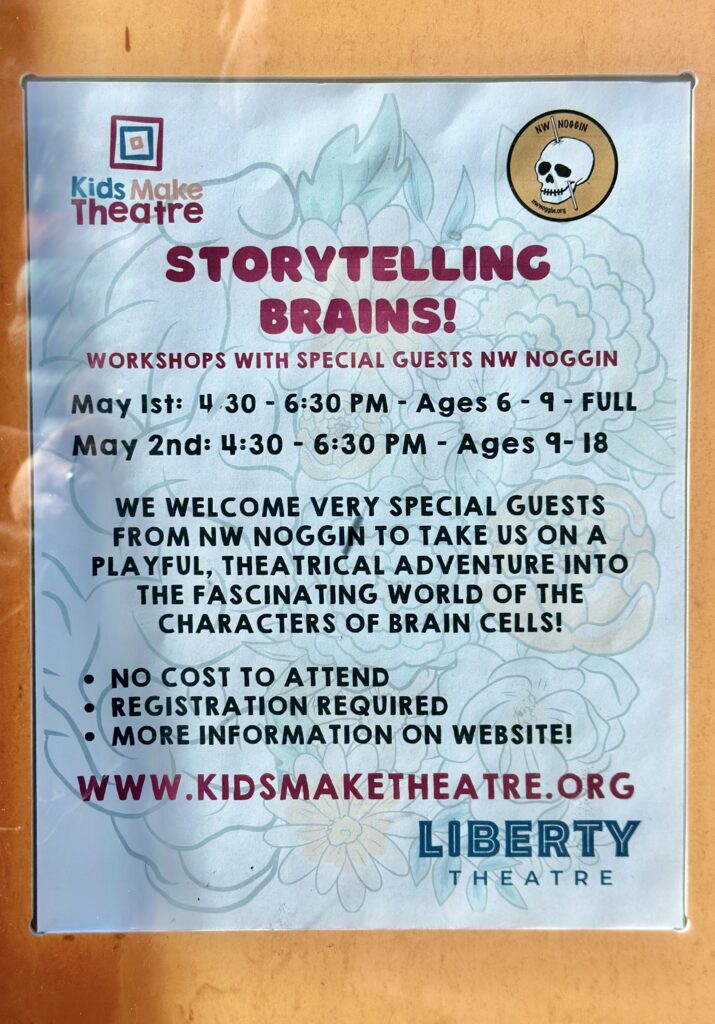
We joined Kids Make Theatre to offer two free workshops about the gorgeous and compelling cells that populate our noggins! For each event we enjoyed two hours exploring neurons and glia, and then created the cells that inspired us out of pipe cleaners.
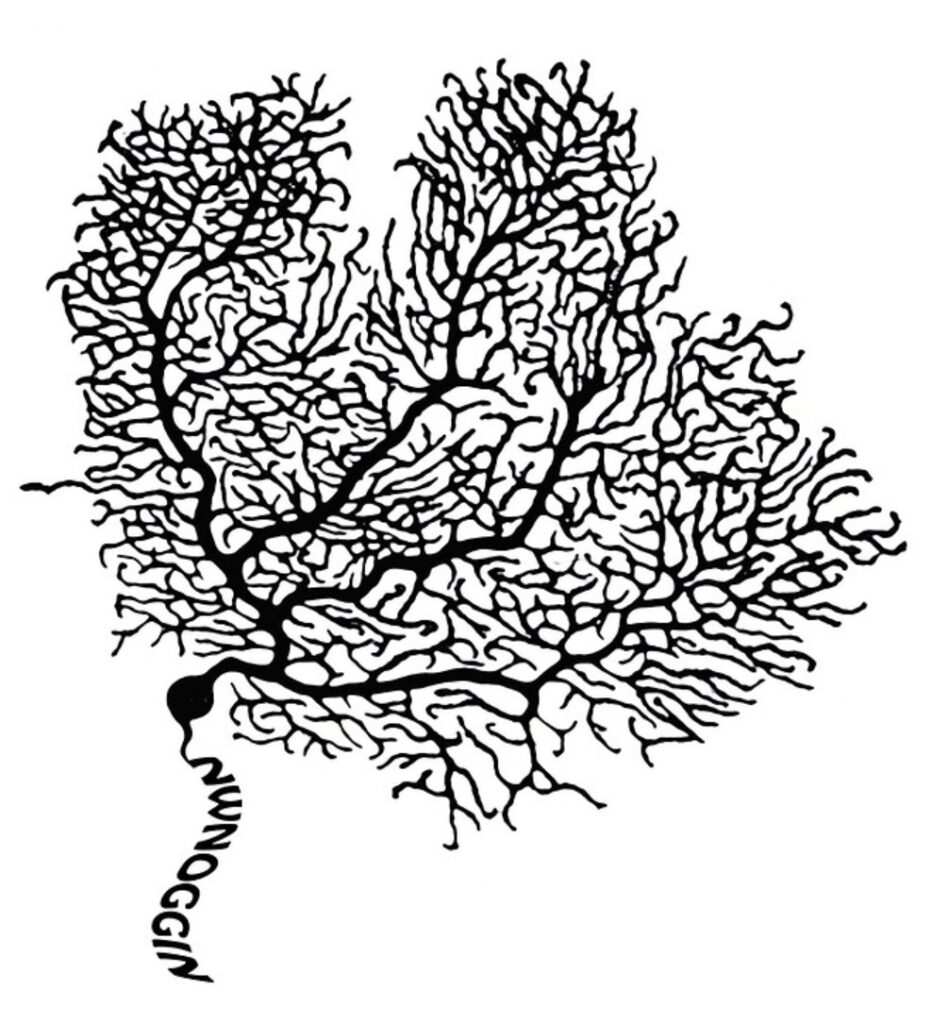
We actually created and performed a cerebral drama before, known as The Land of Cerebrum, which explored the larger scale structures in our noggins, like the amygdala and cortical lobes. We brought this drama to public schools in Beaverton, Oregon and Washington DC!
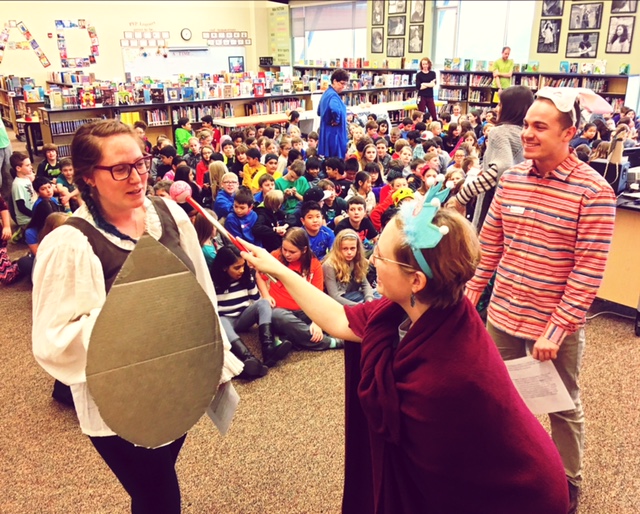
LEARN MORE: The Land of Cerebrum
However this time we went microscopic, and looked closely at our theatrical brain CELLS.

Our brains are thoroughly packed with cellular actors, whose performance and collaboration sets the stage for our thoughts and memories, perceptions and beliefs. Some are easily excitable (go!), some inhibitory (shh!), while others listen, move, or offer sustenance and support.

Artists and writers and neuroscientists have described these cells, neurons and glia, in paint, poetry, pipe cleaners and peer-reviewed research, revealing the underlying structure and function of the cerebral performers that synapse and share, and tell us the stories of who we are.
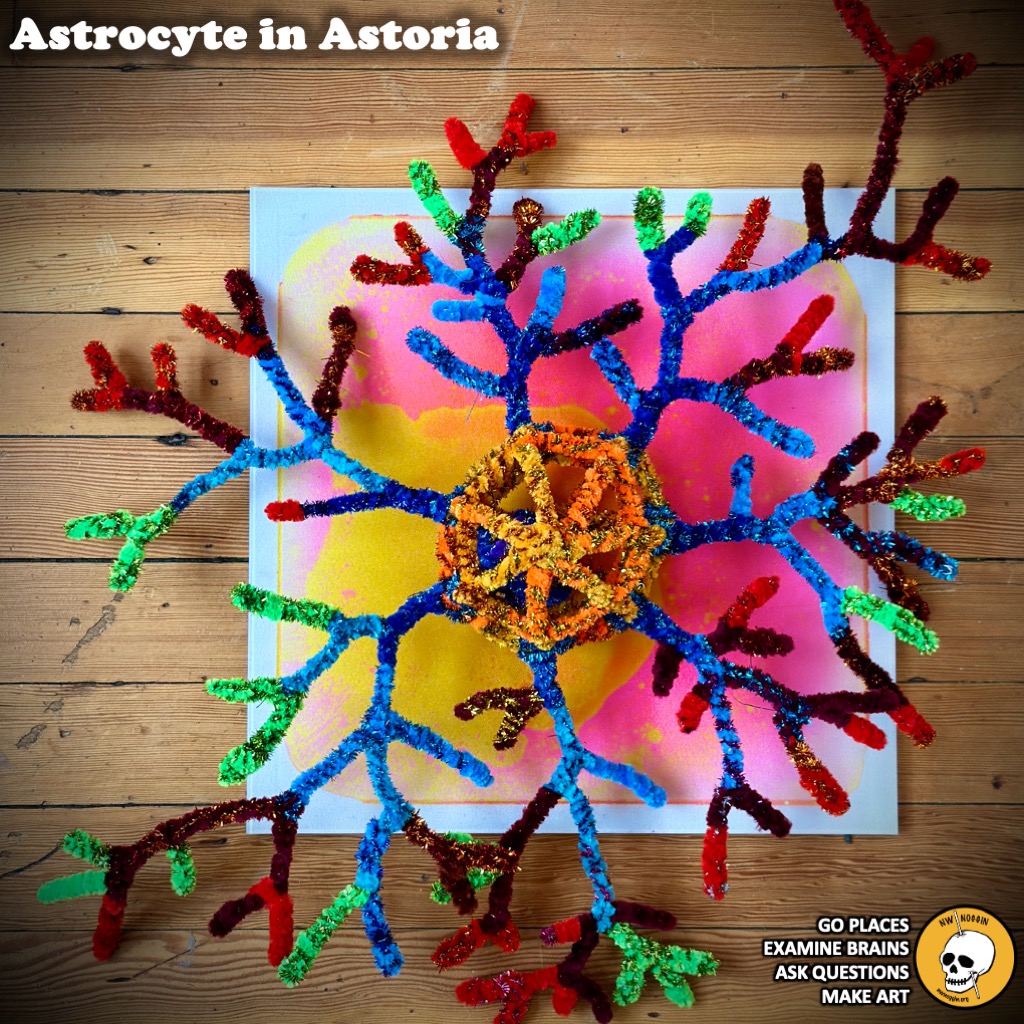
“Like the entomologist in search of colorful butterflies, my attention has chased in the gardens of the grey matter cells with delicate and elegant shapes, the mysterious butterflies of the soul, whose beating of wings may one day reveal to us the secrets of the mind.”
—Santiago Ramon y Cajal
LEARN MORE: The Art of the BRAIN: The Other Workers of the Brain
LEARN MORE: Neuroart: picturing the neuroscience of intentional actions in art and science
LEARN MORE: Cajal + Creativity @ the NIH
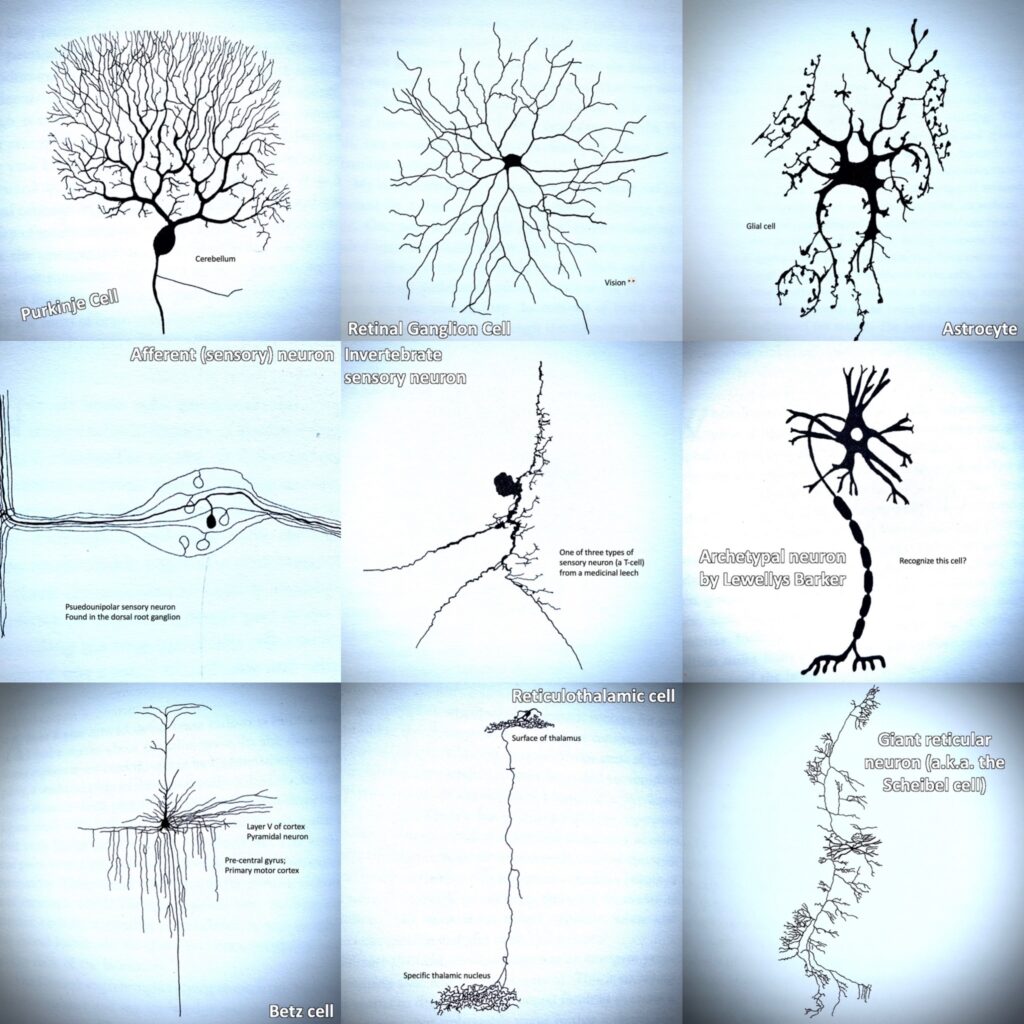
IMAGES: The Story of the Brain in 10 1/2 Cells by Dr. Richard Wingate
We were inspired by the work of Dr. Richard Wingate, a celebrated neuroscientist at Kings College London and Editor of BrainFacts.org, who recently published “The Story of the Brain in 10 ½ Cells.”

LEARN MORE: The interplay between neurons and glia in synapse development and plasticity
LEARN MORE: The Other Brain – Neuron-Glia Interactions
And these cells are beautiful!
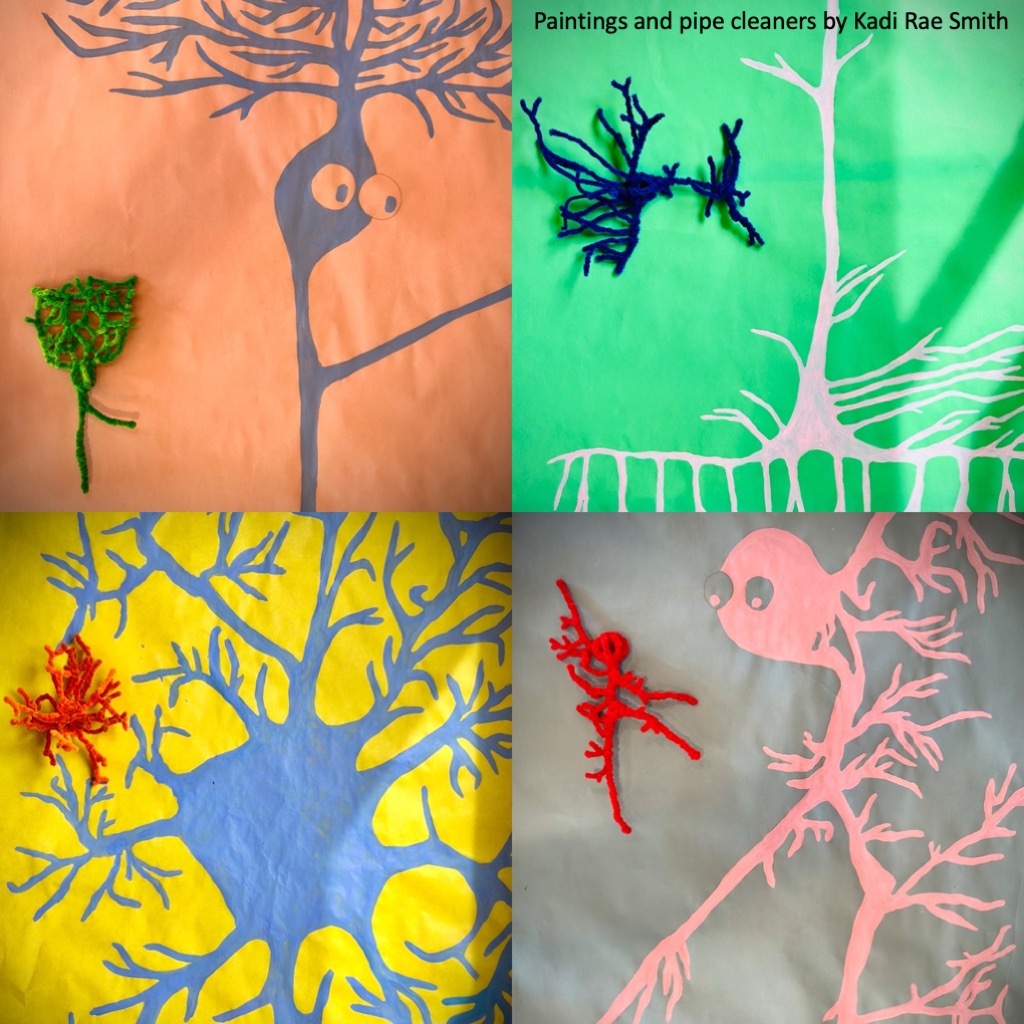
We were privileged to collaborate with three FANTASTIC AND AMAZING TEACHING ARTISTS at Kids Make Theatre, Lori Wilson Honl, Paige DeAlmeida and Sean Cooney, along with Program Assistant Rox Douglas and the incomparable Program Director Hilary Adams!!

Kadi Rae Smith from Portland State University also wrote up a Noggin post about their experience, and how along with Julian Rodriguez they created the format and materials for these workshops!

LEARN MORE: Character Building (literally!) on the Coast


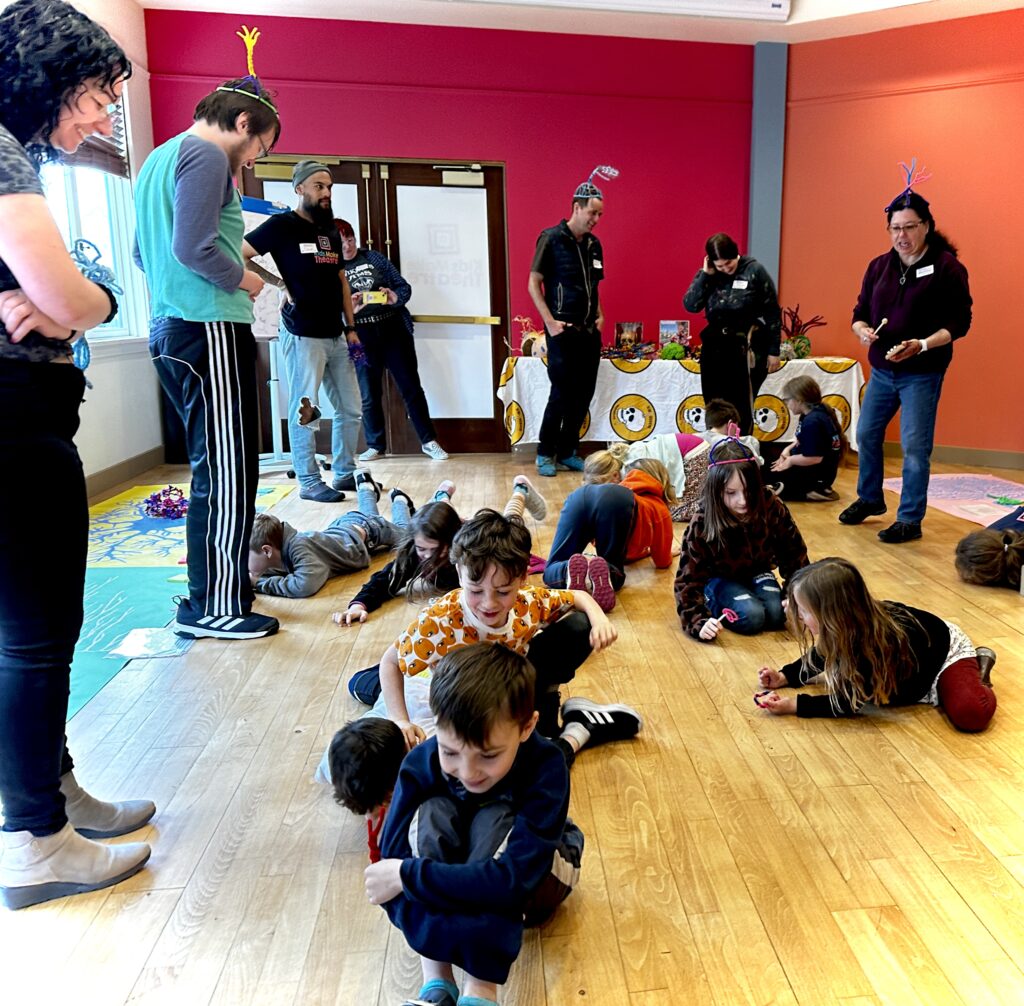
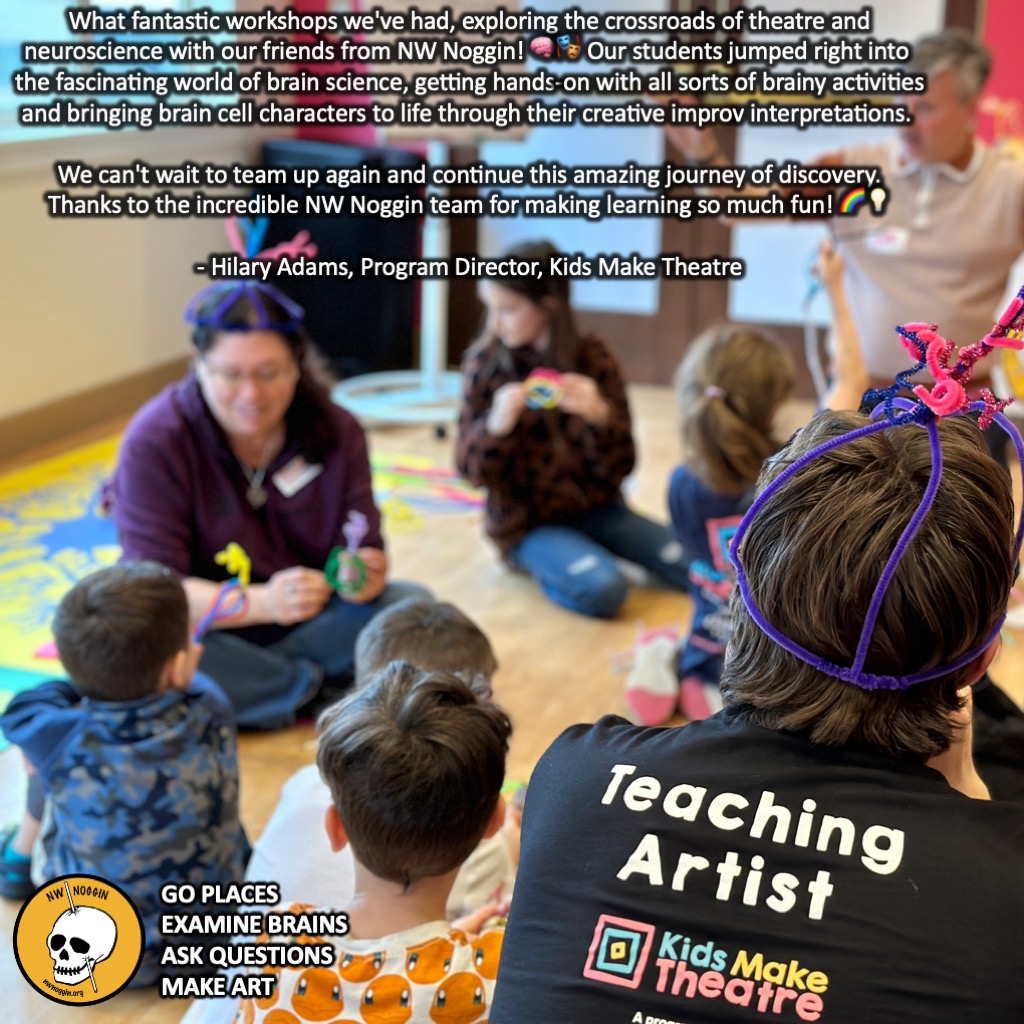
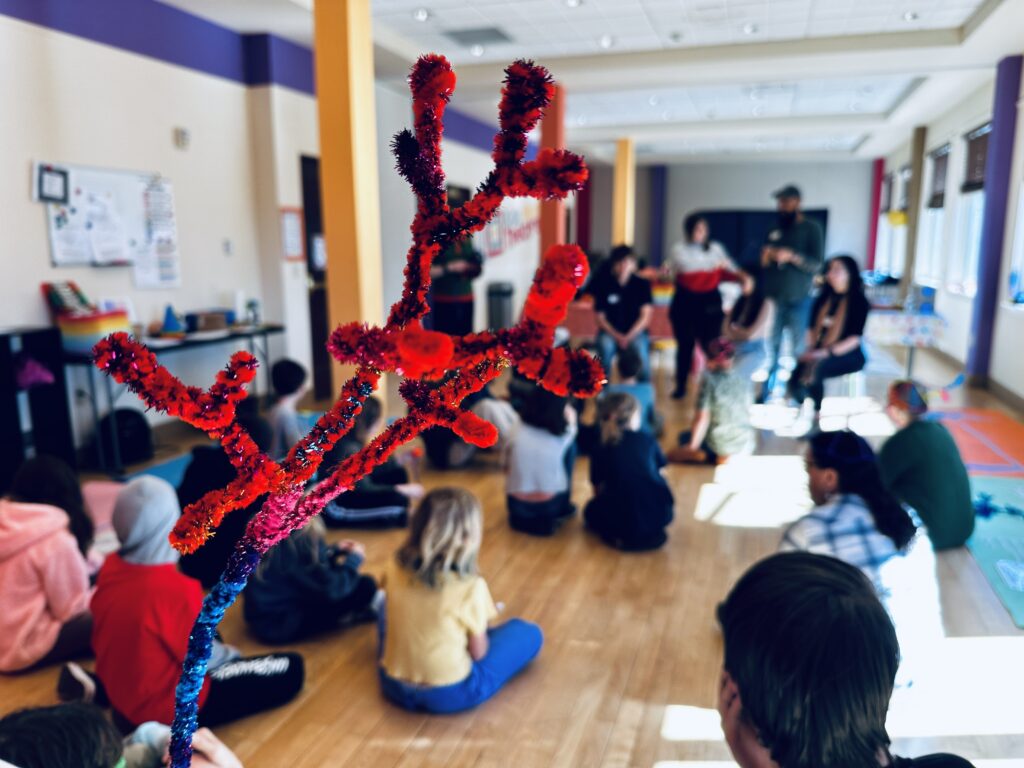

CHECK OUT THEIR PROGRAMS: KIDS MAKE THEATRE
LEARN MORE: Siletz Stories, Singing, Dancing & Brains!
Astoria High School!
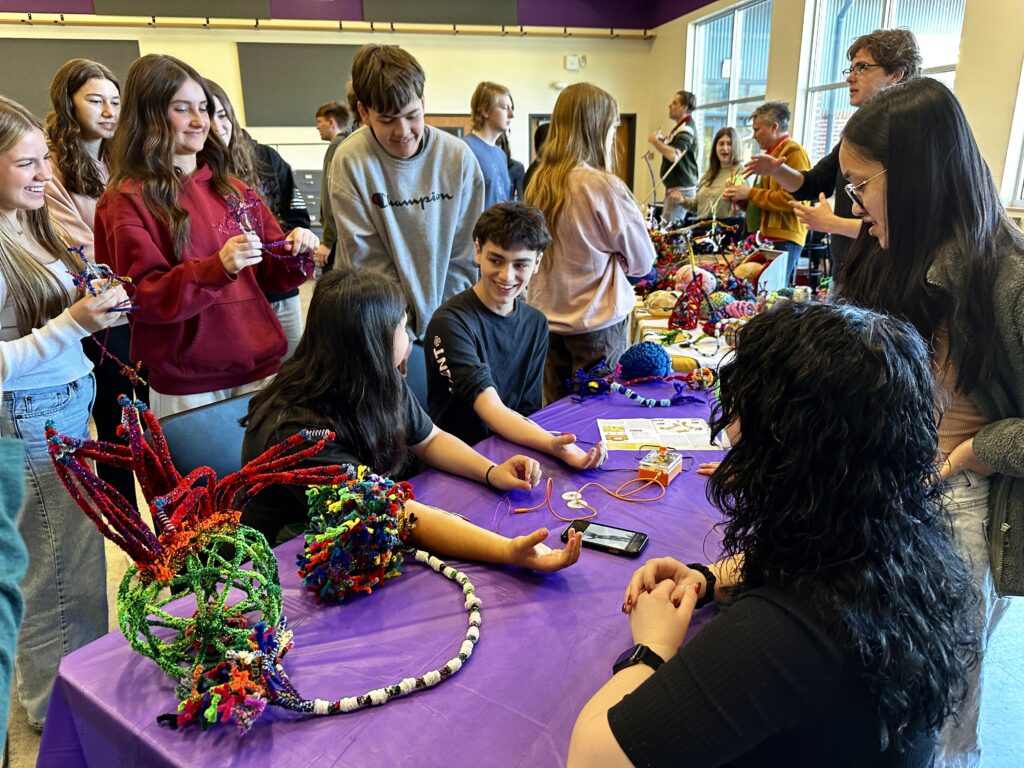
We also joined students at Astoria High School for a deep (and sometimes shocking!) dive into the nervous system! The Human to Human Interface from Backyard Brains is a fantastic way to explore the electrophysiology of information flow in both muscle and nerve cells.

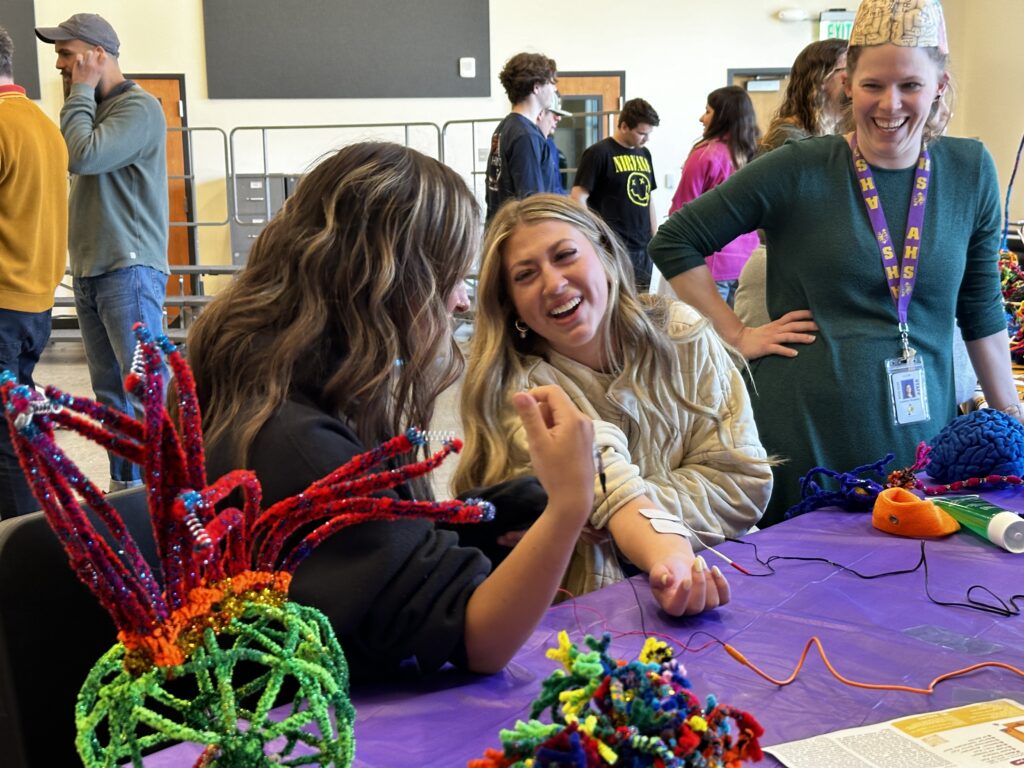


LEARN MORE: Brain Hacking is Electric!
Students asked some fascinating questions!
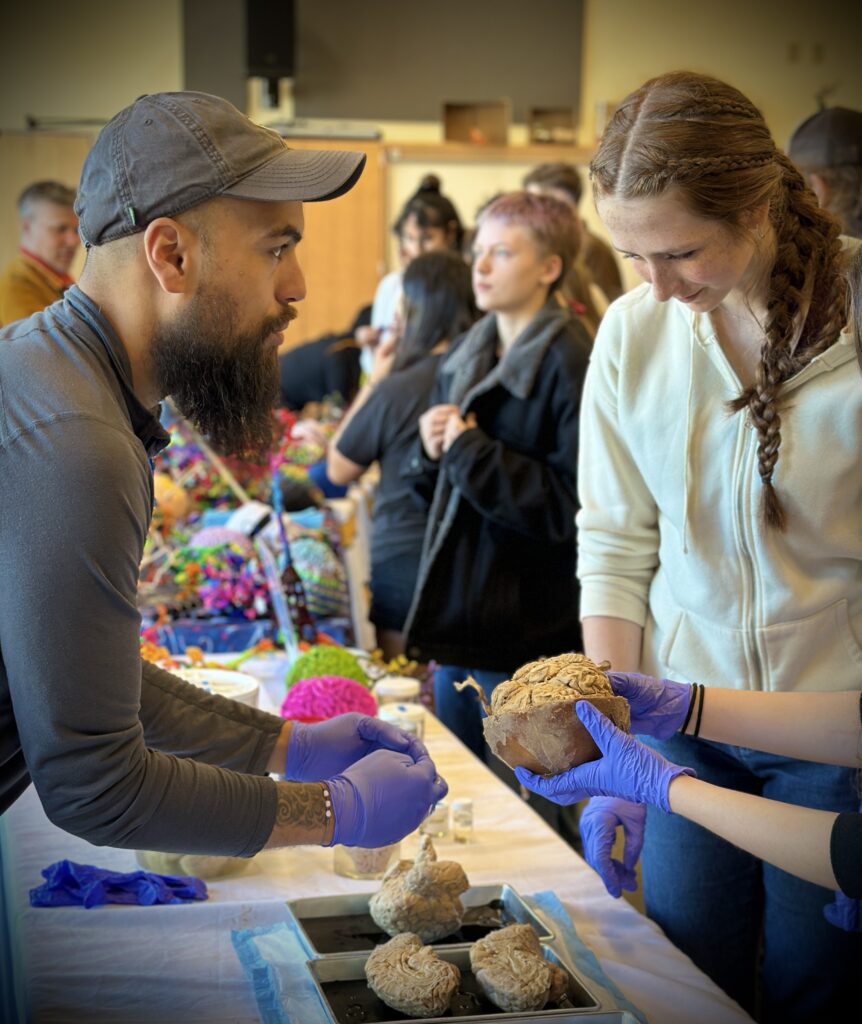
What causes dyslexia? Dyscalculia?
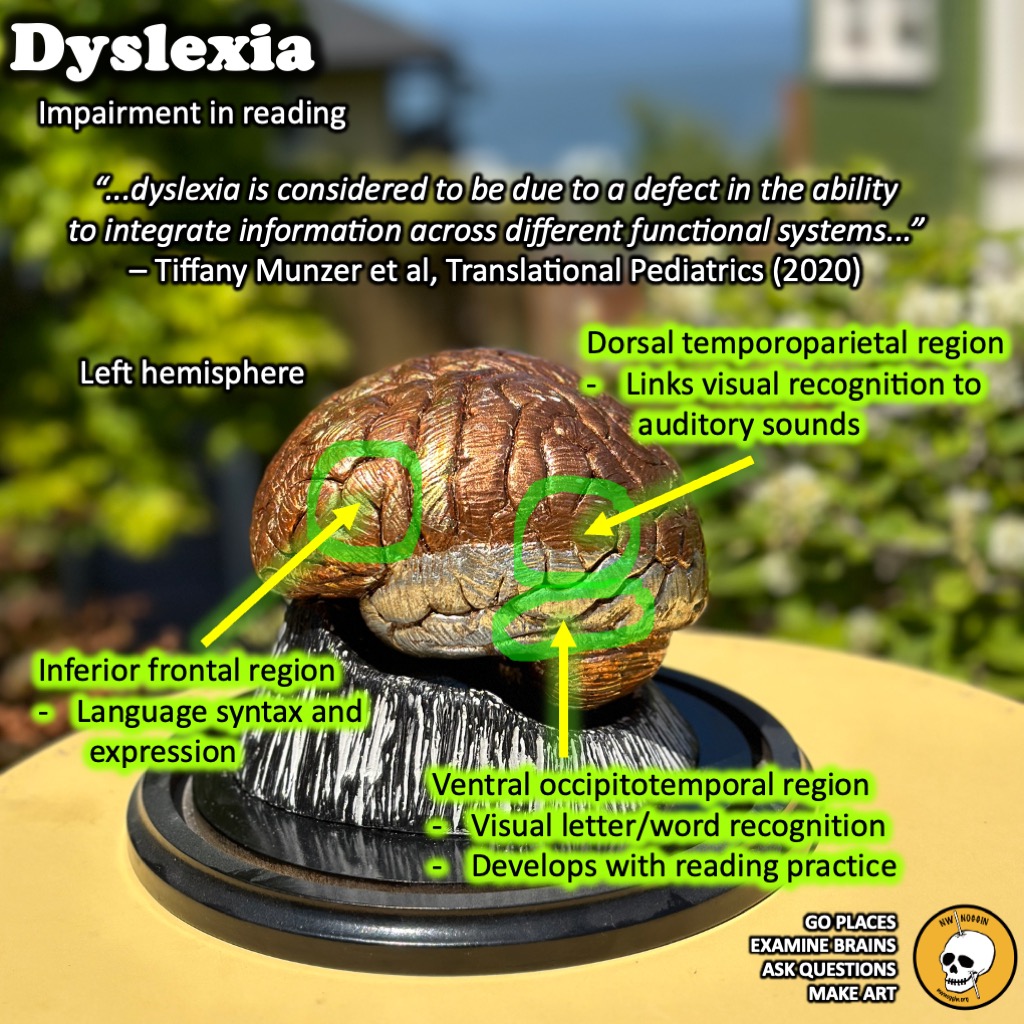
LEARN MORE: Dyslexia: neurobiology, clinical features, evaluation and management
LEARN MORE: What causes dyslexia? Identifying the causes and effective compensatory therapy
LEARN MORE: The Diagnosis and Treatment of Dyscalculia
LEARN MORE: Developmental dyscalculia is not associated with atypical brain activation
LEARN MORE: Developmental brain dynamics of numerical and arithmetic abilities
How does bipolar work?
Can we combine computers and the brain to create virtual reality?
Can you get schizophrenia triggered by an injury?
Is a denser brain more intelligent?
Can you sleep too much?
Does taking pharmaceuticals for mental disorders impact how the brain develops?
Can you process your emotions through movement and dance?
Jewell School
For our last day we drove deep into the forested and occasionally clear cut hills of Clatsop County, to the tiny community of Jewell.
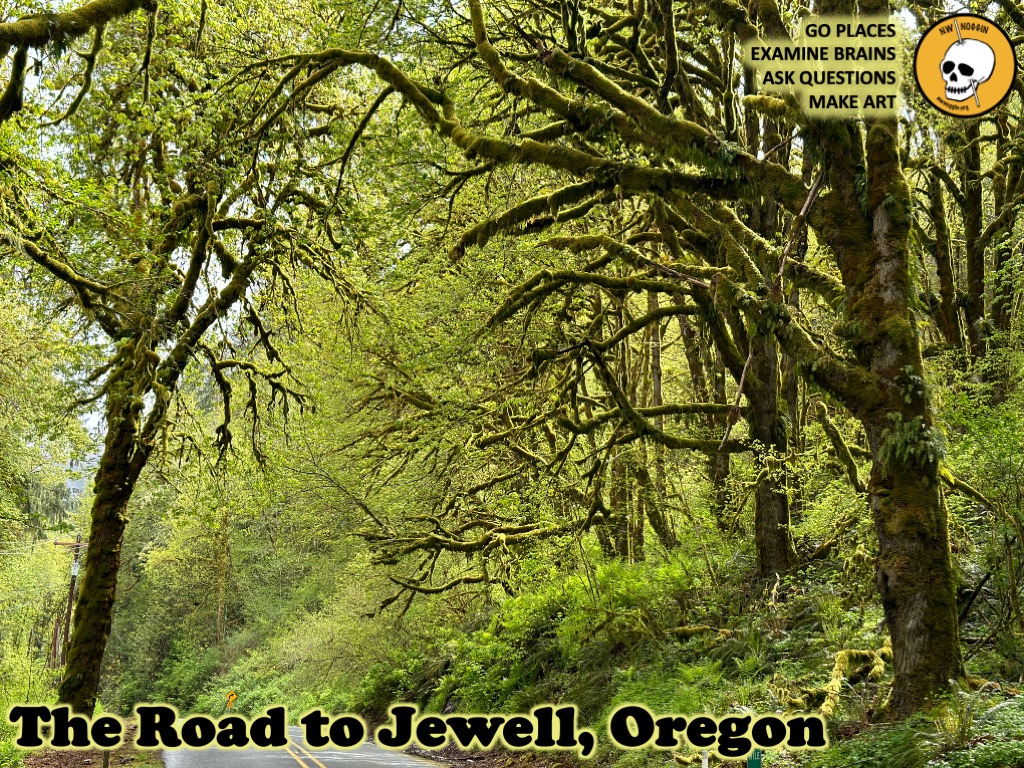
We were welcomed by Tami Swearingen, the Business Manager for the Jewell Public School District, who lives right by the gorgeous Jewell Meadows Wildlife Area, which her husband supervises for the state of Oregon! The meadows were teeming with herds of elk.
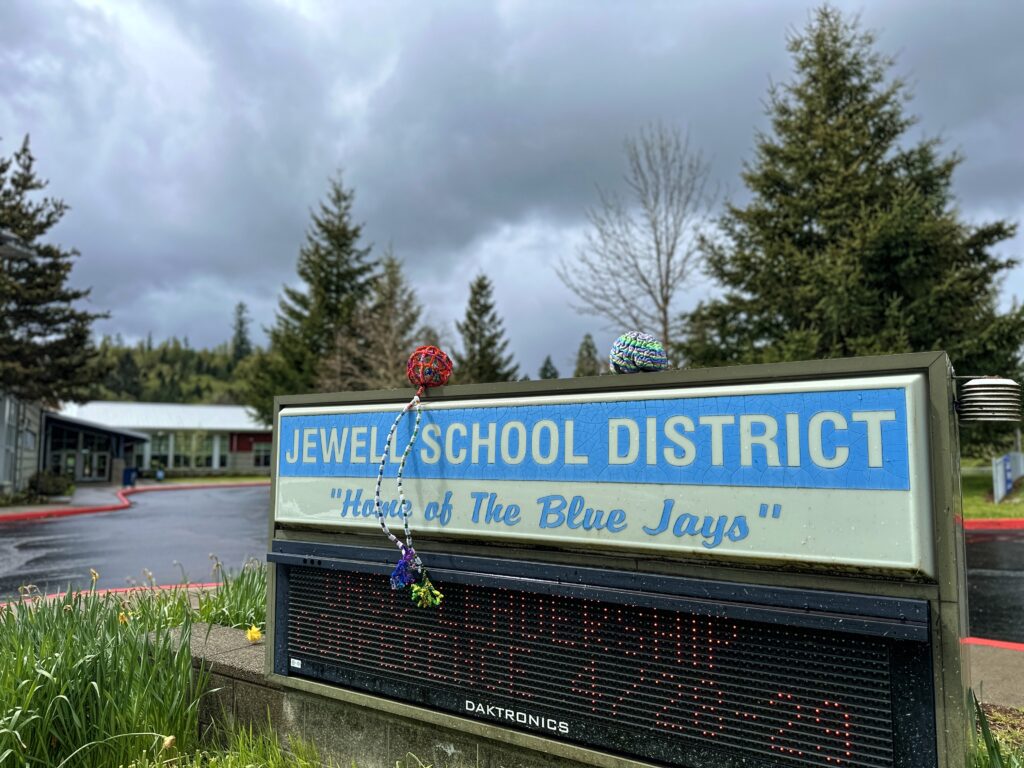
We enjoyed a fantastic day of questions, art making and noggin holding with K-5 students!
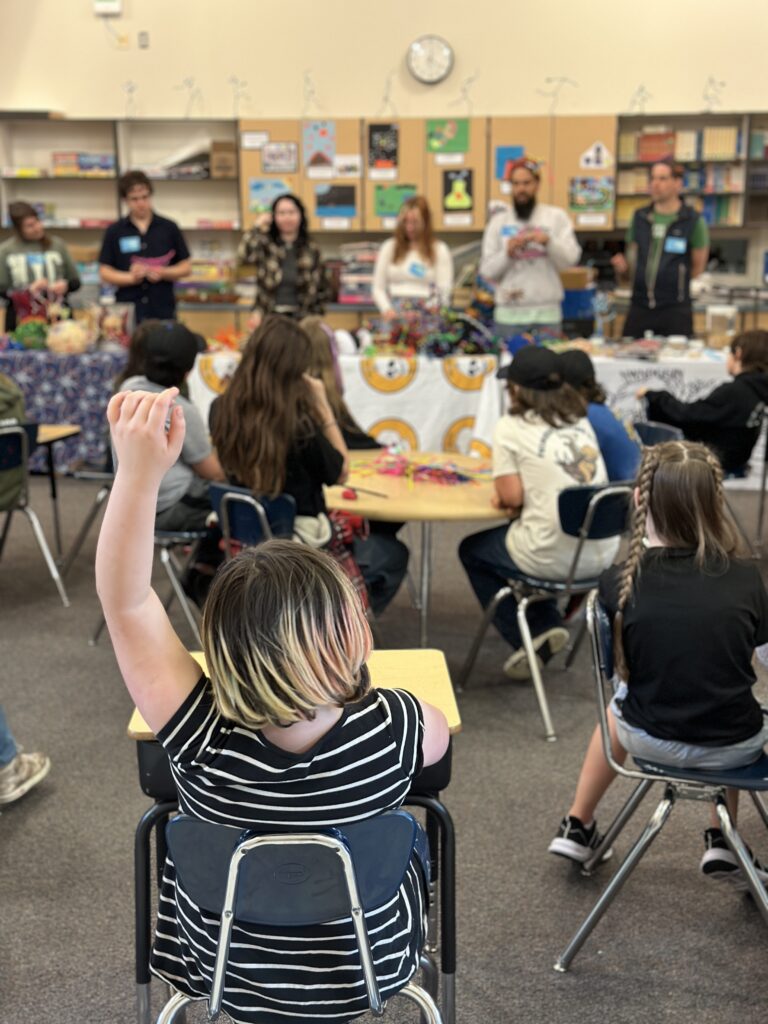
Why do we get nauseous? Do we have two brains? Why does your stomach hurt?
LEARN MORE: Why do we throw up?
What does your brain do? Do we need a brain? What would we do without one?
If a pigs heart is so similar in size that we can do a transplant why is their brain so much smaller? Is the brain like a muscle? How do jellyfish move and survive if they don’t have a brain?
Does an octopus have nine brains?
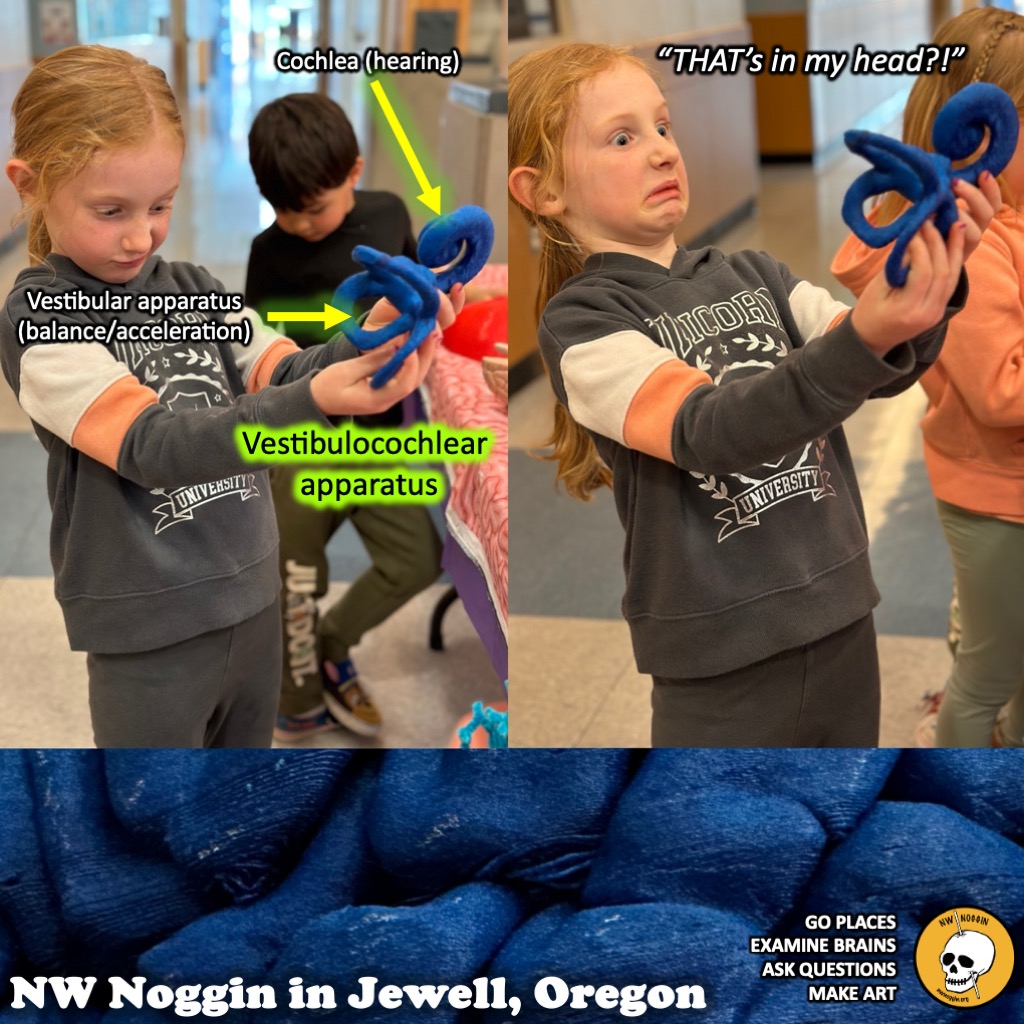
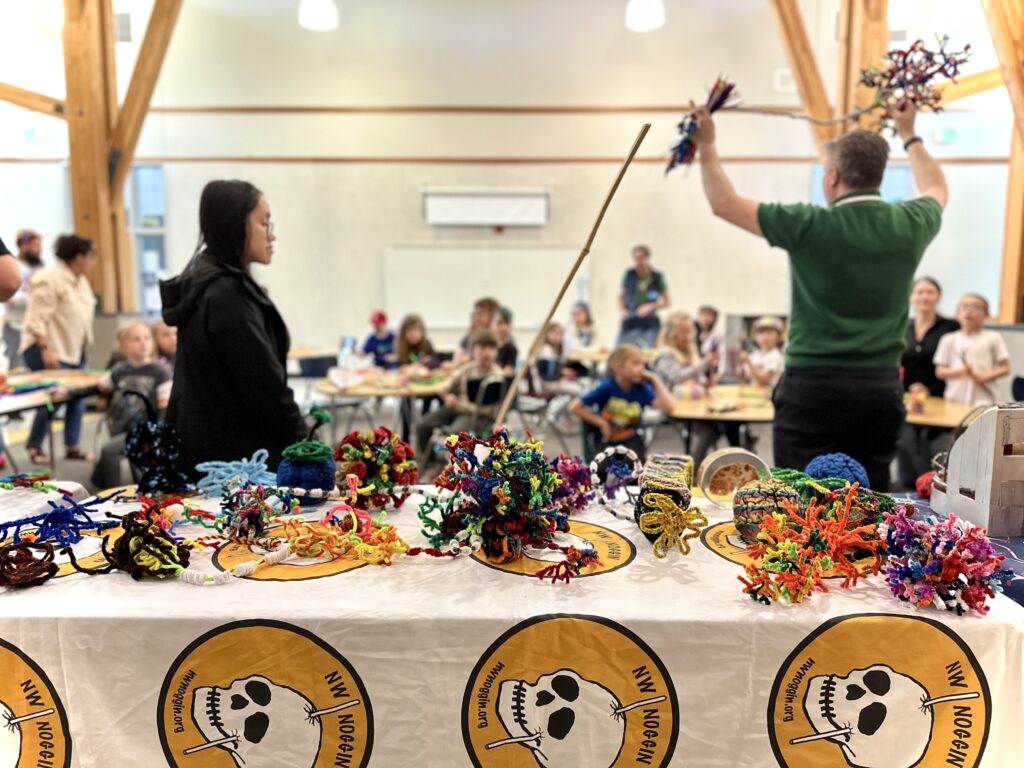

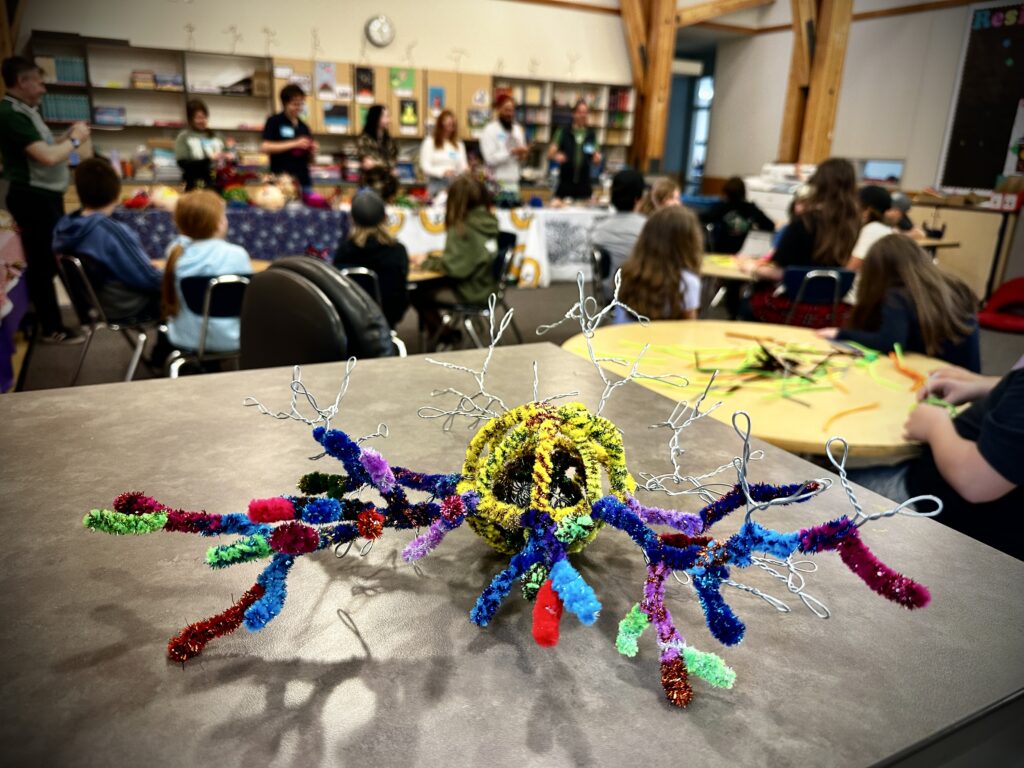
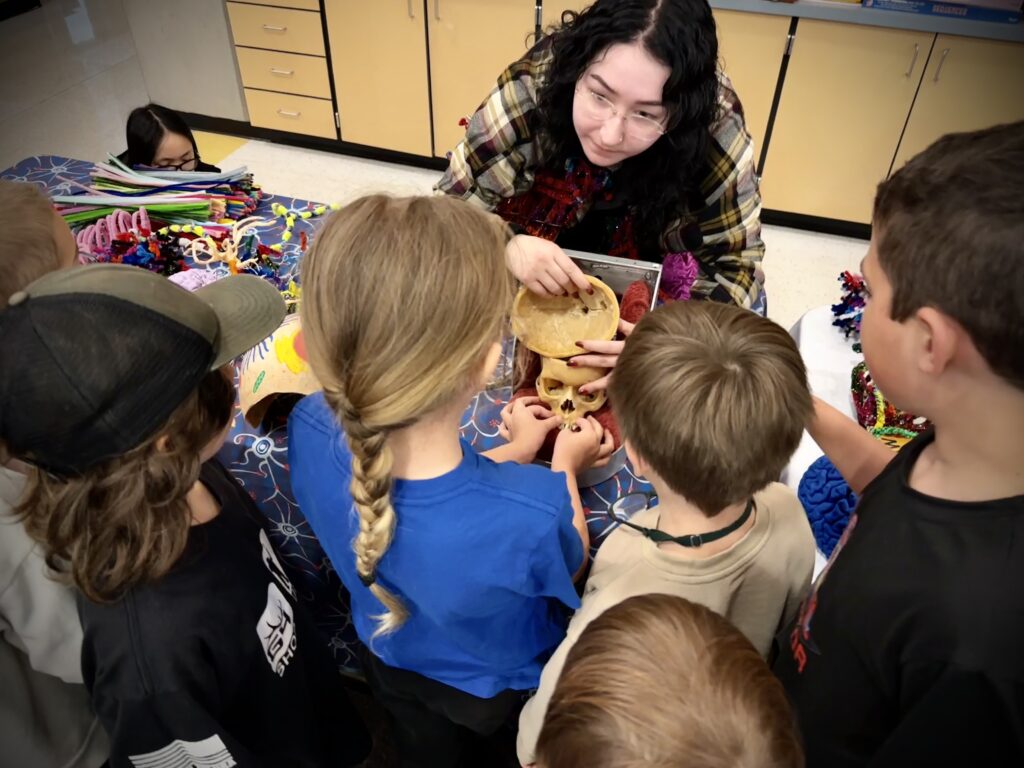

We enjoyed a wonderful lunch with students, and toured the beautiful garden building at Jewell, and learned how this district had built new housing specifically for teachers!


LEARN MORE: Oregon school district gets creative in solving housing crisis
“I just want to give you a HUGE ‘THANK YOU’ for coming to our school. Our kiddos are still talking about it! This will be a day they will remember for years. I wanted to let you know that I have received nothing but EXTREMELY positive comments from the teachers. “Better than a trip to OMSI” one said. One teacher told me this re-ignited her enthusiasm for teaching. Another teacher told me she appreciated how each student’s question was answered and made the students feel important and eager to ask questions! Everyone was so impressed with all of the presenters and THEIR enthusiasm and energy. (Impressive how they handled all of the spontaneous questions!!). It truly was the best presentation I have seen here (and I have been here for about 15 years)! Thank you!!”
— Tami Swearingen, Business Manager, Jewell School District, Oregon
Huge thanks to Tami Swearingen and all the students, teachers and staff at Jewell School!



